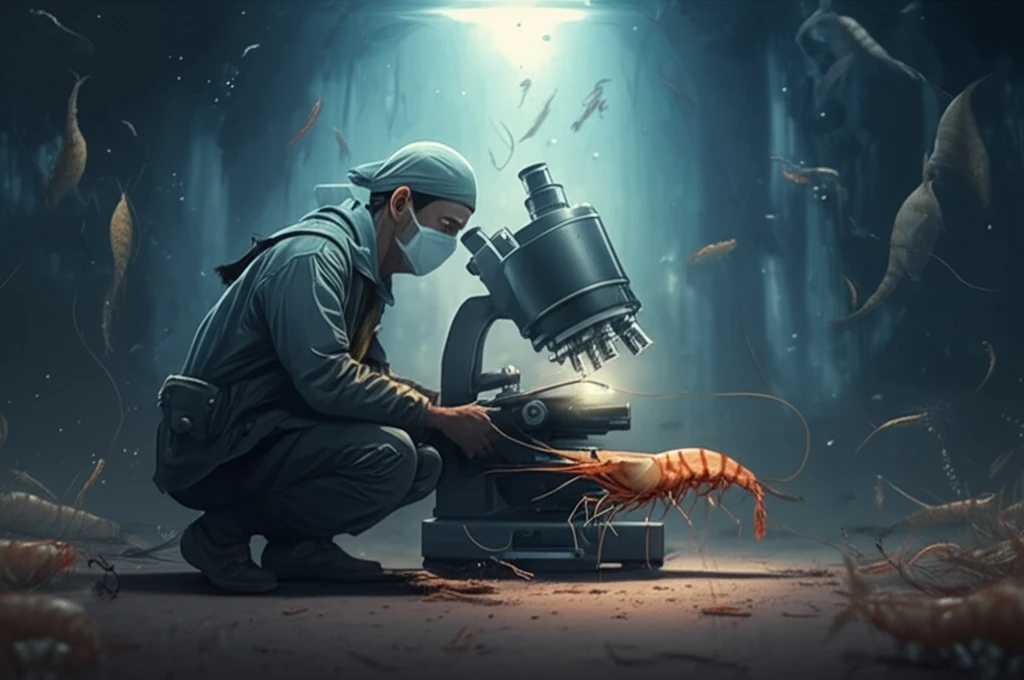
Shrimp SOS: How to Spot and Combat Loose Shell Syndrome (LSS)
"Protect Your Ponds: A Practical Guide to Identifying, Preventing, and Managing LSS in Litopenaeus vannamei"
The global shrimp industry faces numerous challenges, with disease outbreaks posing a significant threat to productivity and economic stability. Among these, Loose Shell Syndrome (LSS) stands out as a chronic condition causing substantial losses. LSS compromises shrimp health, reduces growth rates, and leads to increased mortality, impacting overall yields.
Characterized by a soft carapace, a gap between the muscle tissue and exoskeleton, and often a shrunken hepatopancreas, LSS affects shrimp of various species, including the popular Litopenaeus vannamei. Understanding the causes, symptoms, and effective management strategies for LSS is crucial for shrimp farmers aiming to maintain healthy ponds and profitable operations.
This article delves into the intricacies of LSS in L. vannamei grow-out ponds, drawing on research and practical insights to provide a comprehensive guide for identifying, preventing, and managing this challenging condition. From water quality management to nutritional considerations, we'll explore the key factors influencing LSS and offer actionable steps to protect your shrimp and optimize your pond's performance.
What are the Key Signs of Loose Shell Syndrome in Your Shrimp?

Early detection is crucial in managing LSS and minimizing its impact on your shrimp population. Regular observation and monitoring of your shrimp can help you identify the telltale signs of the syndrome before it spreads and causes significant damage. Here’s what to look for:
- Gap Between Muscle and Exoskeleton: In healthy shrimp, the muscle tissue fits snugly against the exoskeleton. With LSS, a distinct gap forms between the muscle and the shell, making the shrimp appear loose within its own body.
- Lethargic Behavior: LSS-infected shrimp often become sluggish and inactive. They may exhibit reduced swimming activity, decreased feeding, and a general lack of responsiveness.
- Spongy or Flaccid Abdomen: The abdomen of affected shrimp may feel unusually soft and spongy to the touch. This is due to muscular dystrophy, which weakens the abdominal muscles and contributes to the loose shell appearance.
- Discoloration and Fouling: The exoskeleton of LSS-infected shrimp may exhibit discoloration, often appearing darker or brownish than usual. Microbial fouling, where bacteria and other microorganisms colonize the shell, is also common.
- Shrunken Hepatopancreas: The hepatopancreas, a vital organ responsible for digestion and nutrient absorption, may appear shrunken and melanized (darkened) in LSS-infected shrimp. This indicates impaired digestive function.
- Empty or Opaque Gut: The digestive tract of affected shrimp may be empty or filled with an opaque, milky substance. This suggests reduced feeding and digestive problems.
Protecting Your Shrimp and Your Livelihood
Loose Shell Syndrome poses a significant challenge to shrimp farmers, but with proactive management and a keen eye for early signs, it is possible to mitigate its impact and maintain healthy, productive ponds. By understanding the key symptoms, implementing preventive measures, and responding swiftly to outbreaks, you can safeguard your shrimp, optimize your yields, and ensure the long-term sustainability of your shrimp farming operations.
